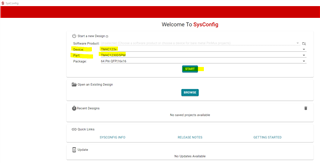Other Parts Discussed in Thread: SYSCONFIG,
Hi,
Long time I don't use CCS and TI's microprocessors. Sorry!
Due to the global supply problem, I think that the use of TM4C123x devices can be (at the moment) a good alternative for my project. Lately I'm used to using IDEs from other firms such as ST, NXP, Silabs, Microchip... and these include some utilities like Pinmux configuration to easily configure the system clock, GPIOs, etc
Where's this utility in CCS11? It seems there's something called SysConfig but I am not able to create a project (i.e. a blink example) with this option.
Could anyone help me with this?
regards,
gaston



